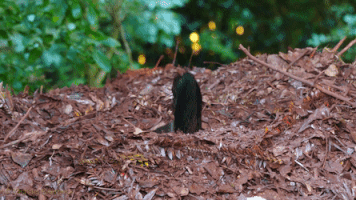Last updated August 10, 2017 at 4:22 pm
5 extinct large megapode birds have been discovered by palaeontologists, reveals giant kangaroo-sized flying turkey once roamed Australia.
When you think of Australian birds what comes to mind might be the kookaburra or even the emu. But I think one of the underrated birds is the Australian Brush turkey.

Credit: Michael Billerbeck
The Brush turkey bury their eggs in mounds of soil and leaf litter; this behaviour is attributed to the Megapode family. The modern Malleefowl also belongs to this family of incubator birds.
Palaeontologists from Flinders University have found 5 extinct large megapode birds. One of which was a giant kangaroo-sized flying turkey known as Progura gallinacea.
Forget Sesame Street, this is the original Australian Big Bird.
 Progura reconstruction. Credit: Elen Shute, Flinders University, from photos by Kim Benson, Tony Rodd and Aaron Camens
Progura reconstruction. Credit: Elen Shute, Flinders University, from photos by Kim Benson, Tony Rodd and Aaron Camens
The fossils from Queensland, New South Wales, South Australia and Western Australia show they had long, strong wing bones which enabled to fly, even if only a short distance. If you’ve ever seen a Brush turkey attempt to fly up into a tree, you’ll know how hilarious this is, so a giant version of this would be outright ridiculous.
Based on the size of fossils, the researchers estimate a body mass of almost 8kg for this P. gallinacea making it the largest known species of megapode, extant (still in existence) or extinct.
The other species described in this research include Progura campestris, Latagallina naracoortensis, Latagallina olsoni, and Garrdimalga mcnamarai. This review of previously described and newly found fossils reclassified the taxonomy of Australian incubator birds.
These giant birds, amongst other megafauna, roamed Australia during the Pleitocene (aka the time of the giants) about 1.6 million to 10,000 years ago. How these mega birds transitioned to modern, smaller birds until now has been unclear due to the lack of fossil evidence. Now they have very much larger fossils from extinct species that are pre-dated by smaller, modern-sized fossils, it is known that the Malleefowl did not dwarf down to modern day size as previously thought.
Australia is already home to some incredibly unique animals. It is an astonishing fact that this is a small sliver of the species diversity of what our land used to have and that there’s still so much more to discover.
This research, however, does not explain the origins of how Big Bird got down to Sesame Street.
- Link to research article: https://doi.org/10.1098/rsos.170233
Follow us on Facebook, Twitter and Instagram to get all the latest science.






























































































































































































































































































































































































































































































